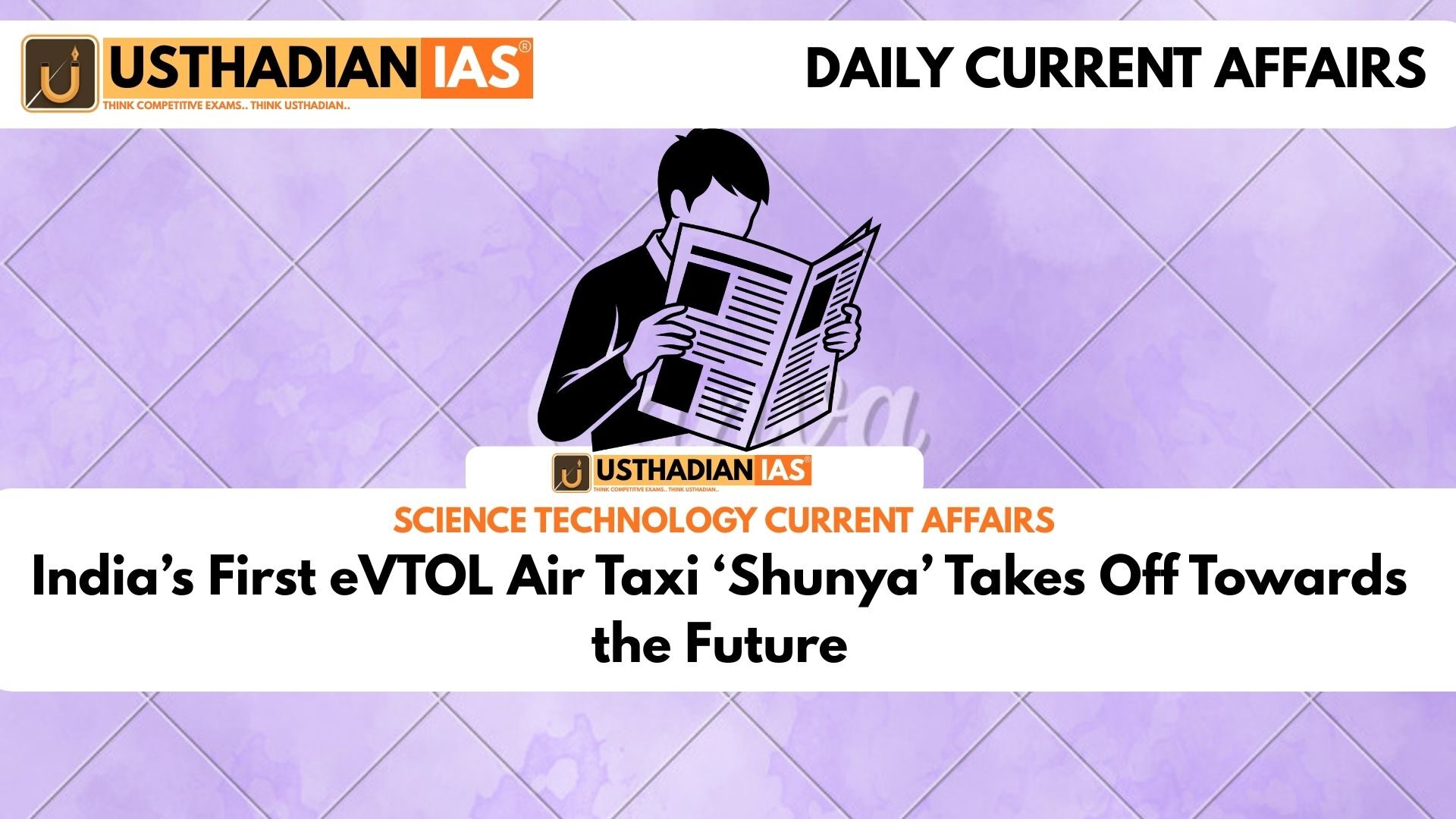A Bold Leap Into the Sky
India’s First eVTOL Air Taxi ‘Shunya’ Takes Off Towards the Future : India is stepping into a new era of transportation with the launch of its first electric flying taxi, named Shunya. Developed by Bengaluru-based Sarla Aviation, this eVTOL (electric Vertical Take-Off and Landing) prototype represents a futuristic vision of urban air mobility. With this launch, India joins the global race in electric aviation, promising to revolutionize how we travel in congested cities.
What Is Shunya?
The name ‘Shunya’, which means ‘zero’ in Sanskrit, symbolizes zero emissions and a carbon-free future. The prototype unveiled by Sarla Aviation is built to fly short urban routes, offering a green and efficient alternative to traditional road transport. Designed for commutes between 20 to 30 kilometers, it can soar at speeds of up to 250 km/h, making intercity hops both fast and eco-friendly.
With a seating capacity of six passengers and a maximum payload of 680 kg, Shunya can comfortably carry individuals or small groups. The craft uses electric propulsion and is expected to reduce noise pollution, making it suitable for densely populated urban areas.
Why It Matters
India’s major metros are grappling with traffic jams, rising fuel costs, and carbon emissions. Shunya comes at a time when cities like Bengaluru, Delhi, and Mumbai are exploring smart mobility solutions. By taking transportation into the air, Sarla Aviation is addressing two core urban problems: road congestion and air pollution.
Moreover, the project aligns with India’s broader Net Zero by 2070 goal and supports government initiatives like Make in India and Startup India, showcasing indigenous innovation in aerospace.
Key Features of Shunya
- Electric VTOL technology: Capable of vertical takeoff and landing, requiring minimal infrastructure like helipads.
- Max speed: 250 km/h for short-distance urban routes.
- Capacity: Carries six passengers and luggage with a total payload of 680 kg.
- Design: Lightweight carbon-composite structure for high energy efficiency.
- Safety: Multiple redundant systems and real-time monitoring for flight stability.
These features put Shunya in line with international peers like Joby Aviation (USA) and Lilium (Germany), marking India’s entrance into the elite eVTOL developer club.
Future Scope and Urban Planning
According to Sarla Aviation, trials will begin soon in Bengaluru, with plans to scale to other smart cities. In the near future, Shunya air taxis could connect tech parks, airports, and major transit points in minutes rather than hours. This could also be a game changer for medical emergencies, where every second counts.
Experts believe that air taxis will become commercial in India within the next five to seven years, once regulations, air corridors, and safety frameworks are formalized by DGCA and MOCA.
Static GK Snapshots
India’s First eVTOL Air Taxi ‘Shunya’ Takes Off Towards the Future :
| Topic | Detail |
| Name of Project | Shunya eVTOL Air Taxi |
| Developed By | Sarla Aviation, Bengaluru |
| Launch Year | 2025 |
| Speed | Up to 250 km/h |
| Passenger Capacity | 6 |
| Max Payload | 680 kg |
| Flight Range | 20–30 km |
| Significance | First Indian-made electric flying taxi |
| Global Counterparts | Joby (USA), Lilium (Germany), Volocopter (EU) |
| Policy Support | Make in India, Net Zero 2070, Urban Air Mobility |








